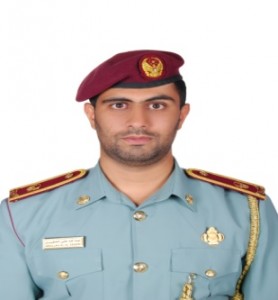Community-centred early warning enhances disaster resilience in the UAE
By Abdulla Ali Al Hmoudi
Thursday, 26 February 2015
 UNISDR has recognized custom-made messages for all-inclusive groups as a vital component of early warning systems (EWS). Despite this, the element is seldom accounted for in hazard observation and EWS. Assessment of the risks should encompass both climate scenarios and a combination of hazard and vulnerability scenarios.
UNISDR has recognized custom-made messages for all-inclusive groups as a vital component of early warning systems (EWS). Despite this, the element is seldom accounted for in hazard observation and EWS. Assessment of the risks should encompass both climate scenarios and a combination of hazard and vulnerability scenarios.
In the United Arab Emirates, there are differences in the use of technology in the exchange of information and reliance on warning and monitoring from the National Centre for Meteorology and Seismology.
Early warning within the UAE faces various socio-technological challenges: firstly, the role of communities within the EWS is not clearly defined. Also, members of the community are uninformed and unaware of federal plans, and as a result, they do not know the procedures in the event of the arrival of early warning. The lack of an end-to-end, people-centered strategy on EWS causes low levels of preparedness and a general lack of knowledge regarding emergency management plans.
Secondly, the UAE has a huge expatriate population who do not speak Arabic. The presence of other languages such as English, Persian, Hindi and Urdu creates significant communication challenges.
There are therefore significant weaknesses in the transfer of understandable warning messages and readiness information to the people that are vulnerable. Also, there is no networking and communication among the NCMS and other stakeholders. A comprehensive and operative community-based EWS consists of four correlated elements which, if any of them has a weakness of failure, could create a failure of the entire system. These four elements are:
- risk knowledge
- monitoring and warning services
- dissemination and communication
- response capability
The members of the community need to accept early warning messages and interpret them well, to handle the situation and respond. Early warning messages should be taken very seriously. The community should adopt and develop EWS as a common exercise and culture. The legitimacy of any community-based EWS can be evaluated by the following:
- Do the end users or the community accept the early warning messages?
- Is there a possibility of issuing incorrect early warning messages?
- Does the community react/respond to the early warning messages?
- Does the system accept the customary early warning practice/local knowledge?
Early warning is meant to give the opportunity of time to prepare and to reduce the harm to victims, and reduce the economic and social losses. In the UAE, the Centre for Meteorology and Seismology is the main institution responsible for the creation of an EWS in the state, working with the concerned authorities, including the Ministry of Interior, which represents emergency management, as well as public safety and civil defence. Coordination between them contributes to overcoming the challenges facing early warning in the UAE.
Abdulla Ali Al Hmoudi is a PhD researcher in natural disaster early warning systems at Salford University, UK, and president of security and safety in the search and rescue team of the United Arab Emirates. He is also head of occupational health, safety emergency management and public safety in the Abu Dhabi Police Department, and holds a Master’s degree in natural disaster management from the University of Dubai, obtained in 2011.
 UNISDR has recognized custom-made messages for all-inclusive groups as a vital component of early warning systems (EWS). Despite this, the element is seldom accounted for in hazard observation and EWS. Assessment of the risks should encompass both climate scenarios and a combination of hazard and vulnerability scenarios.
UNISDR has recognized custom-made messages for all-inclusive groups as a vital component of early warning systems (EWS). Despite this, the element is seldom accounted for in hazard observation and EWS. Assessment of the risks should encompass both climate scenarios and a combination of hazard and vulnerability scenarios.